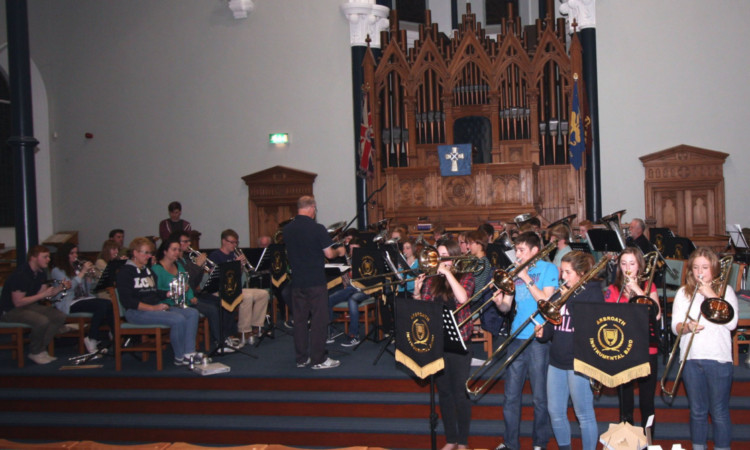One of the oldest musical organisations in Angus will celebrate its 120th anniversary on Friday.
Arbroath Instrumental Band will host its annual gala concert at the town’s St Andrew’s Church. The theme will be Music from the Movies and the event will include an additional performance from the youth band section.
Tickets priced £10 or £8 concessions are available from Robertson’s in Fisheracre, Wilbourn Insurance Services in Millgate or McDougalls in Carnoustie High Street.
The group came into existence as a result of the Horticultural Society’s annual show at Arbroath’s Gayfield Park on August 4 1893.
The show featured a contest between six brass bands, which sparked calls for the town to have a group to call their own.
The 1st FAV Band, a military-operated group, evolved into the Arbroath Instrumental Band and a plea for funding was issued for equipment.
After its foundation, the band went from strength to strength, taking part in competitions in the newly-formed Northern Counties Brass Band Association and Scottish Brass Band Association competitions.
In 1909, the band won promotion into the Championship section by placing first out of 25 bands in the Second Section.
After the First World War, when contesting was suspended, the band picked up where it left off and in 1920 and 1922, took third and second place respectively in the Championship Section a feat never bettered its history.
In 1947, resident conductor Fred Keane died and was succeeded by a series of other conductors, with the band bringing in professionals for competitions.
John Boyle, who had served as both player and president, took over as conductor in 1952 and was to become the longest serving bandmaster to date.
As well as band success, a quartet of players from the group won the Scottish Quartet Championships in 1971 and subsequently travelled to Oxford to compete in the British Championships.
In 1978, Mr Boyle tendered his resignation, ending a 26-year association with the band, however, his son William took over the reins.
Ray Pattullo, a long-standing member of the band and local dance band player, then agreed to take over as conductor in 1982, overseeing an increase in membership over a tenure of about 10 years.
Michael Robertson, a local brass instructor, joined the ranks in 1998 and in 1999, accepted the role of musical director.
He is currently a tutor with the reserve and training bands of the National Youth Brass Band of Scotland, as well as musical director and conductor of the highly-successful Carnoustie and District Youth Brass Band.
Mr Robertson was awarded the Mortimer Medal for 2011 at a presentation given by the Worshipful Company of Musicians only the second time a Scotsman has received this prestigious award.
The Arbroath band now has the largest membership in its long history, with more than 35 members and a thriving youth section.
Vice-president and deputy musical director Ann Ness said: “The increasing youth membership can be purely attributed to Mike.
“It is huge testament to him and his exceptionally high standard of teaching that every year sees at least one youngster from the band go on to continue their musical education in such impressive establishments as the Royal Academy in London, the Royal Colleges in Manchester and Cardiff, as well as the Scottish Conservatoire in Glasgow.”
